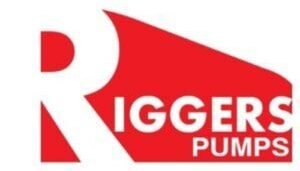Tea factories rely on a range of specialized equipment to process tea leaves efficiently, including withering, rolling, fermentation, drying, and packaging machines. Maintaining strict hygiene standards is crucial for product quality and smooth equipment operation. High-pressure cleaning stands out as one of the most effective cleaning methods, ensuring thorough sanitation without causing damage. This article explores key tea factory equipment and best practices for high-pressure cleaning to maintain their efficiency and longevity.
Essential Tea Factory Equipment and Their Cleaning Needs
- Withering Troughs
- Function: Withering troughs spread tea leaves in thin layers to reduce moisture content before rolling and fermentation.
- High-Pressure Cleaning Application: Over time, dust, dried leaf particles, and residues accumulate in withering troughs. A high-pressure water jet efficiently removes these contaminants, preventing mold and bacterial growth. Adjustable nozzles ensure deep cleaning in hard-to-reach corners while maintaining the integrity of the trough.
- CTC Machines (Crush, Tear, Curl)
- Function: CTC machines crush, tear, and curl tea leaves into granules, increasing their surface area for oxidation.
- High-Pressure Cleaning Application: Tea dust and leaf debris often clog the rollers and cutting teeth of CTC machines, reducing efficiency. A directed high-pressure stream removes these deposits, ensuring optimal performance without wearing out the machine components. Regular cleaning prevents blockages that could lead to overheating and machine damage.
- Rotary Rolling Machines
- Function:These machines twist and shape tea leaves to develop the desired texture and structure.
- High-Pressure Cleaning Application: Leaf residues and moisture accumulation in rolling machines can contaminate subsequent batches. High-pressure cleaning eliminates these residues, reducing cross-contamination risks and improving product consistency.
- Fermentation Machines (CFM – Continuous Fermentation Machine)
- Function: These machines regulate oxygen exposure, allowing the oxidation process to develop the tea’s aroma, flavor, and color.
- High-Pressure Cleaning Application: The high-humidity environment of fermentation machines makes them prone to microbial growth. High-pressure water jets remove organic matter and sanitize chamber walls, preventing mold formation and ensuring optimal oxidation conditions.
- Drying Machines
- Function: These machines remove moisture from fermented tea leaves, preserving their quality and shelf life.
- High-Pressure Cleaning Application: Dust, charred residues, and fine particles build up inside dryers, potentially affecting tea flavor and posing a fire hazard. High-pressure cleaning dislodges debris from heating elements and air vents, ensuring safe and efficient drying operations.
- Sorting and Grading Machines
- Function: these machines classify tea leaves based on size, quality, and grade.
- High-Pressure Cleaning Application:Fine tea dust and broken leaf particles can obstruct sorting mechanisms. Using a targeted high-pressure jet removes these particles, ensuring accurate sorting and reducing machine downtime.
- Conveyor Belts
- Function: Conveyor belts transport tea leaves between various processing stages.
- High-Pressure Cleaning Application: Conveyor belts accumulate dust, sticky residues, and tea particles. A high-pressure cleaning routine ensures belts remain free of contaminants that could be transferred to different processing stages.
- Tea Packing Machines
- Function: These machines weigh and package processed tea, preparing it for market distributi
- High-Pressure Cleaning Application: Hygiene is critical in packing areas. High-pressure cleaning eliminates leftover tea particles, dust, and packaging residue, ensuring a clean environment that prevents contamination.
How High-Pressure Cleaning is Accomplished in a Tea Factory
High-pressure cleaning involves using powerful jets of water, usually between 1500 to 3000 PSI (pounds per square inch), to clean surfaces, machines, and equipment in a tea factory. The water pressure effectively dislodges dirt, dust, tea particles, and residues from surfaces, leaving them clean and free of contaminants. Here’s how high-pressure cleaning is applied:
- Selection of Nozzles and Attachments
High-pressure cleaning systems offer a range of nozzles for different tasks:
- Narrow nozzles for precision cleaning of intricate machine parts.
- Wider nozzles for rapid cleaning of factory floors and walls.
- Rotary nozzles for deep penetration into stubborn deposits.
1.Pre-Cleaning and Surface Preparation
Before using high-pressure cleaning, machines should be pre-rinsed to remove loose debris. This step ensures maximum efficiency in dislodging stubborn residues.
2. Pre-Cleaning and Surface Preparation
Before using high-pressure cleaning, machines should be pre-rinsed to remove loose debris. This step ensures maximum efficiency in dislodging stubborn residues.
3. High-Pressure Water Application
Water jets at 1500 to 3000 PSI effectively remove dirt, dust, and contaminants. Specialized nozzles allow access to tight spaces and machine interiors.
4. Chemical Cleaning (Optional)
For machines exposed to grease or biological contaminants, food-safe cleaning agents may be mixed with high-pressure water. Afterward, a thorough rinse ensures no chemical residues remain.
5. Drying and Inspection
After cleaning, machines are air-dried or manually dried to prevent residual moisture from affecting sensitive components like fermentation chambers. A final inspection ensures complete cleanliness before restarting operations.
6. Routine Cleaning Schedules
High-pressure cleaning is often part of a scheduled maintenance routine in tea factories. Regular cleaning of the equipment and facilities ensures that contamination risks are minimized and that the machinery continues to operate efficiently without interruption.
Key Benefits of High-Pressure Cleaning in Tea Factories
- Enhanced Hygiene & Product Safety: Thorough cleaning eliminates contaminants, ensuring tea purity.
- Optimized Machine Performance: Residue-free machines operate efficiently and last longer.
- Lower Maintenance Costs: Prevents costly repairs caused by residue buildup.
- Higher Productivity: Clean equipment reduces downtime, maximizing tea processing efficiency.

